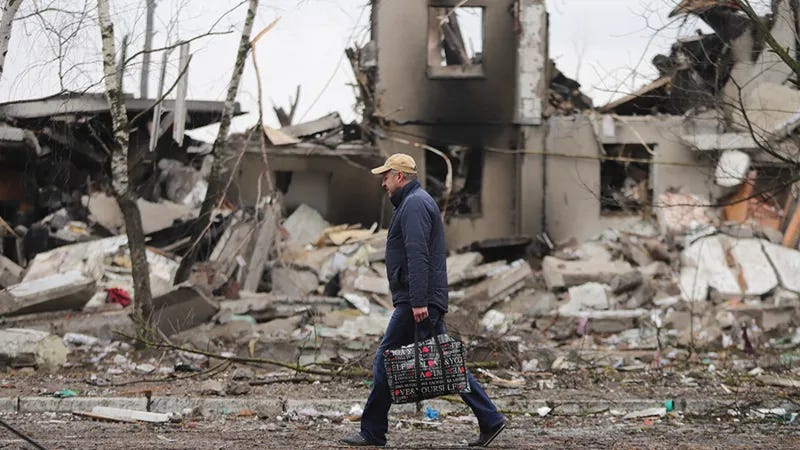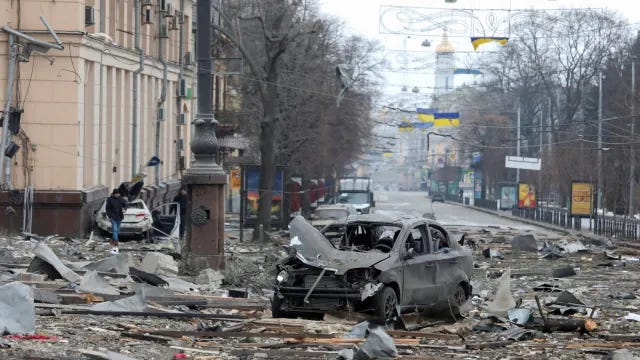The Carbon Cost of War
War Destroys Human Lives - And The Built Environment Supporting Those Lives
What is it good for? Absolutely nothing! - Edwin Starr
Russian military adventurism in Ukraine rightly holds the world’s full attention. Stories and images of human suffering and loss, destruction of property and infrastructure, and crushing blows to the quality of life can overwhelm our ability to process the full impct.
Direct environmental damage is high as well. Tanks and troops cross fields, streams, and ecologically sensitive areas with impunity. Impacts on food production and forests can take decades to repair.
War also crushes physical infrastructure like buildings, roads and utilities that support modern, and particularly urban life. Assuming this war, like all before it, will eventually end, what will be the environmental cost of attempting to restore Ukraine to just the pre-war condition?
The astounding rebuilding of European and Japanese cities after WWII are testaments to human resiliency. Marshaling the human energy and physical resources that was required to accomplish that reconstruction is a story now infrequently retold. For reasons I can’t fully understand, war, tragedy and suffering get the headlines that are rarely afforded to recovery, resilience and strength of community.
Just how much time, labor and materials will be required to restore Ukraine to its pre-war functionality cannot be guessed until the outcome of this invasion is known.
But just as a way of processing the tragedies that are unfolding, I decided to consider another category of costs; one more closely aligned with the goals of this Substack site.
Rebuilding a bombed-out city or country requires huge quantities of materials, and each has an environmental cost. As just a first entry point into the long-term and Herculean effort awaiting the people of Ukraine, and the ultimate enfironmental cost of the work that needs to be done, I have inserted below a series of links to images showing examples of the destruction created by the war, followed by estimates of the amount of carbon dioxide that will be emitted during the production of each ton of some of the basic materials that will required (images cannot be embedded due to copyright limitations).
Hopefully the images and numbers will speak for themselves.
Producing the weapons of destruction, from ammunition and rifles to tanks and planes, also delivers a huge carbon burden to the environment, with destruction the clear intent of their use.
To quote the famous rock song: War, what is it good for? Absolutely nothing!
Including the planet.
* * * * * * * * * * * * *
Cement:
https://www.bbc.com/news/world-europe-60610840
Carbon dioxide per ton of cement: 0.99 tons- global production of cement accounts for 8% of global emissions
Steel:
https://www.cnn.com/videos/world/2015/02/02/pkg-paton-walsh-ukraine-destroyed-donetsk-airport.cnn
Carbon dioxide per ton of steel: 1.85 tons – global production of steel also accounts for 8% of global emissions
Road Materials:
https://inews.co.uk/news/ukraine-war-scenes-of-destruction-across-country-after-ferocious-russian-bombings-1491131
Carbon dioxide per mile of road: 3,500 or 8,700 or 4,500 tons per mile
Glass:
https://abcnews.go.com/International/wireStory/ap-photos-destruction-death-ukraine-bombardment-83190325
Carbon dioxide per ton of glass - Not recycled : 8.4 tons Recycled : 1.4 tons








